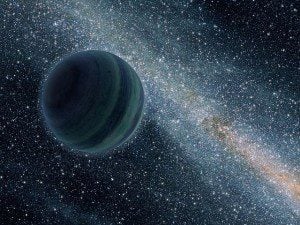
(Click to enlarge.)
The current (10 January 2015) issue of The Economist includes an interesting report about a meeting of the American Astronomical Society in Seattle last week.
The report focuses on the search for earth-like planets. The Kepler, a 2009 satellite launched by NASA, has thus far discovered (I believe) eight new planets. Three of these appear to be in the “habitable zones” of their solar systems — that is, sufficiently close to their respective suns for water to be liquid, but not so close that water would be steam. (It’s thought that liquid water is a prerequisite for biological life.)
The trouble is that the nearest confirmed exoplanet thus far, the nearest planet known outside our own solar system, is 113,000,000,000,000 kilometers away. At such distances — and remember, that’s the closest that we know — it’s very difficult even to see such planets. Their existence has to be inferred by means of indirect measurements, such as momentary changes in the intensity of a star’s light when an orbiting planet passes in front of it. This passage is called a “transit.”
Proposals have been made to create tools for measuring an exoplanet’s atmospheric pressure. (Liquid water cannot exist if the atmospheric pressure is too low.) Another suggestion is to watch for the glint of light reflected off of an exoplanet’s oceans, which, of course, would differ markedly from the light reflected by a rocky surface.
One particular exoplanet, Kepler 438b, is garnering considerable interest. It’s probably a bit larger than the Earth and somewhat warmer, but it’s also very likely rocky. Thus far, it may be the most Earthlike planet we know of.
“But only an account of this earth, and the inhabitants thereof, give I unto you. For behold, there are many worlds that have passed away by the word of my power. And there are many that now stand, and innumerable are they unto man; but all things are numbered unto me, for they are mine and I know them.” (Moses 1:35)










